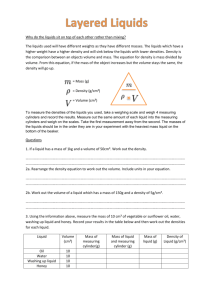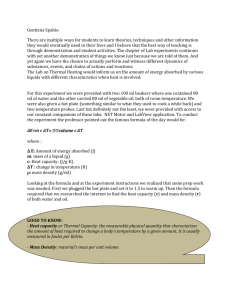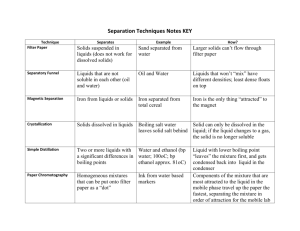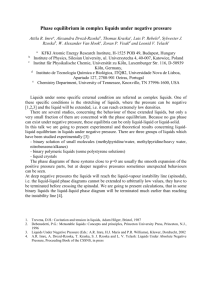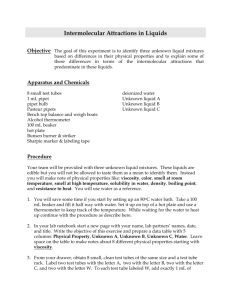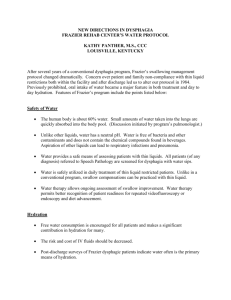Electrodilatometry of liquids, binary liquids and surfactants
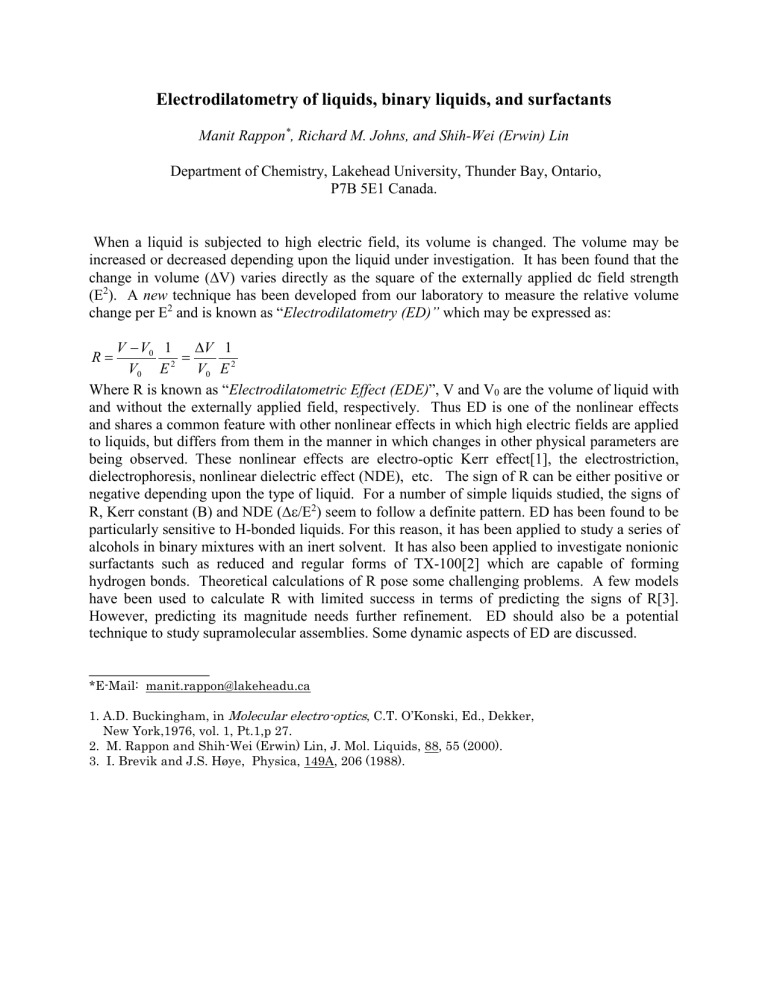
Electrodilatometry of liquids, binary liquids, and surfactants
Manit Rappon
*
, Richard M. Johns, and Shih-Wei (Erwin) Lin
Department of Chemistry, Lakehead University, Thunder Bay, Ontario,
P7B 5E1 Canada.
When a liquid is subjected to high electric field, its volume is changed. The volume may be increased or decreased depending upon the liquid under investigation. It has been found that the change in volume (
V) varies directly as the square of the externally applied dc field strength
(E 2 ). A new technique has been developed from our laboratory to measure the relative volume change per E
2
and is known as “ Electrodilatometry
(ED)”
which may be expressed as:
R
V
V
0
1
E
2
V 1
E
2
V
0
V
0
Where R is known as “
Electrodilatometric Effect (EDE)
”, V and V
0
are the volume of liquid with and without the externally applied field, respectively. Thus ED is one of the nonlinear effects and shares a common feature with other nonlinear effects in which high electric fields are applied to liquids, but differs from them in the manner in which changes in other physical parameters are being observed. These nonlinear effects are electro-optic Kerr effect[1], the electrostriction, dielectrophoresis, nonlinear dielectric effect (NDE), etc. The sign of R can be either positive or negative depending upon the type of liquid. For a number of simple liquids studied, the signs of
R, Kerr constant (B) and NDE (
/E
2
) seem to follow a definite pattern. ED has been found to be particularly sensitive to H-bonded liquids. For this reason, it has been applied to study a series of alcohols in binary mixtures with an inert solvent. It has also been applied to investigate nonionic surfactants such as reduced and regular forms of TX-100[2] which are capable of forming hydrogen bonds. Theoretical calculations of R pose some challenging problems. A few models have been used to calculate R with limited success in terms of predicting the signs of R[3].
However, predicting its magnitude needs further refinement. ED should also be a potential technique to study supramolecular assemblies. Some dynamic aspects of ED are discussed.
________________
*E-Mail: manit.rappon@lakeheadu.ca
1. A.D. Buckingham, in Molecular electro-optics
New York,1976, vol. 1, Pt.1,p 27.
, C.T. O’Konski, Ed., Dekker,
2. M. Rappon and Shih-Wei (Erwin) Lin, J. Mol. Liquids, 88, 55 (2000).
3. I. Brevik and J.S. Høye, Physica, 149A, 206 (1988).

